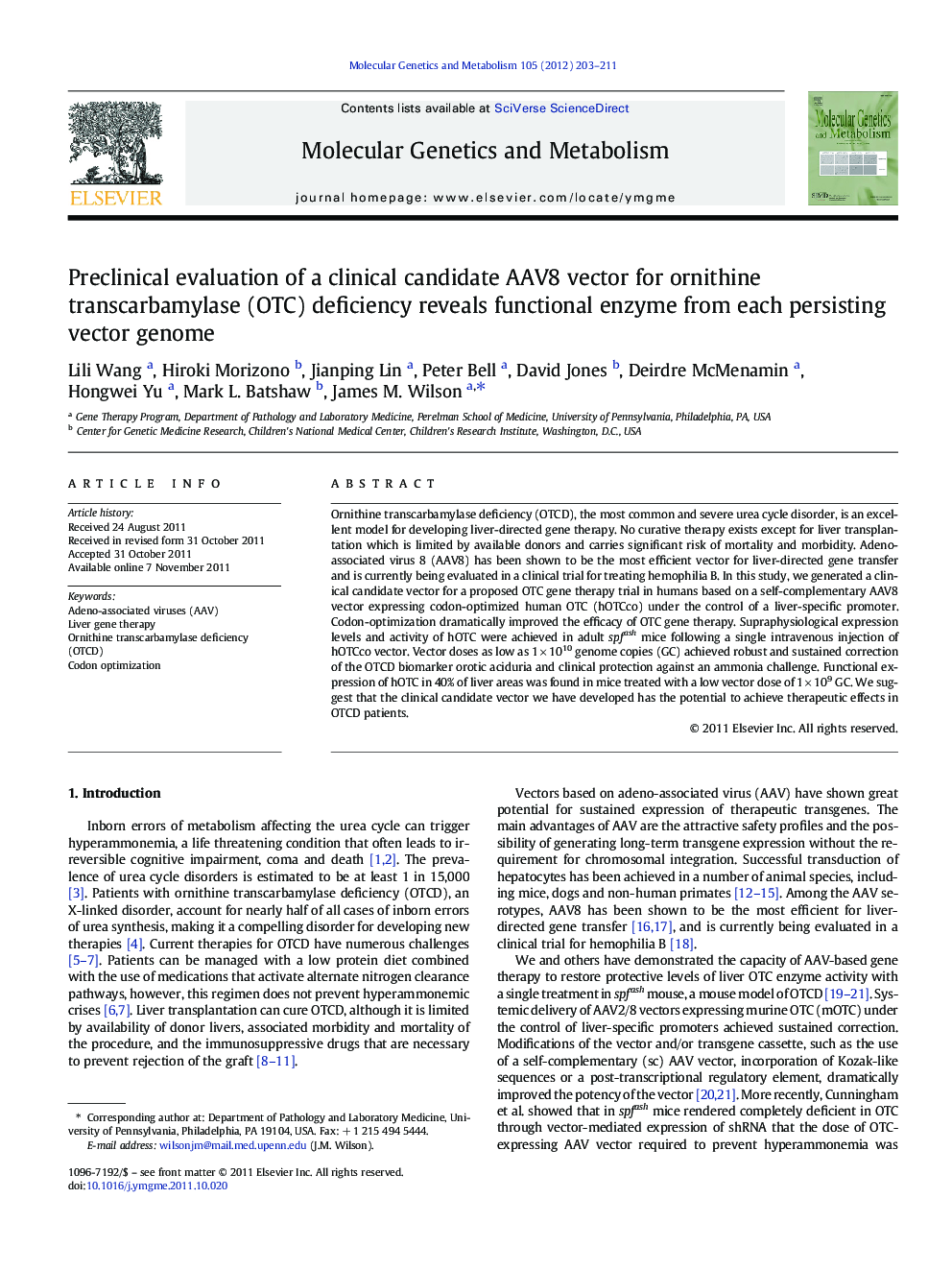| Article ID | Journal | Published Year | Pages | File Type |
|---|---|---|---|---|
| 1998619 | Molecular Genetics and Metabolism | 2012 | 9 Pages |
Ornithine transcarbamylase deficiency (OTCD), the most common and severe urea cycle disorder, is an excellent model for developing liver-directed gene therapy. No curative therapy exists except for liver transplantation which is limited by available donors and carries significant risk of mortality and morbidity. Adeno-associated virus 8 (AAV8) has been shown to be the most efficient vector for liver-directed gene transfer and is currently being evaluated in a clinical trial for treating hemophilia B. In this study, we generated a clinical candidate vector for a proposed OTC gene therapy trial in humans based on a self-complementary AAV8 vector expressing codon-optimized human OTC (hOTCco) under the control of a liver-specific promoter. Codon-optimization dramatically improved the efficacy of OTC gene therapy. Supraphysiological expression levels and activity of hOTC were achieved in adult spfash mice following a single intravenous injection of hOTCco vector. Vector doses as low as 1 × 1010 genome copies (GC) achieved robust and sustained correction of the OTCD biomarker orotic aciduria and clinical protection against an ammonia challenge. Functional expression of hOTC in 40% of liver areas was found in mice treated with a low vector dose of 1 × 109 GC. We suggest that the clinical candidate vector we have developed has the potential to achieve therapeutic effects in OTCD patients.
► Codon optimization significantly improves OTC protein expression levels and activity. ► The clinical candidate AAV8 vector has high transduction efficiency and efficacy. ► Robust and sustained correction in OTCD mice by a sc AAV2/8 vector expressing hOTC. ► Detection of functional enzyme from each persisting vector genome.
